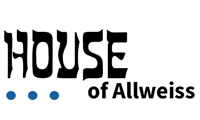The original B5930 was housed in a full size (“A” size) cabinet with a separate console that could house two displays (SPO’s) and the Maintenance Interface Processor (MIP). After production began Arnold Spielberg headed up a project to cost reduce the B5930, it was called the B5920. The product was housed in the lowboy cabinet being used by the B3950 at Pasadena. The separate console was eliminated, and the MIP was integrated into the system cabinet. The SPO terminal could be placed on top of the computer or on a desk. The B5920 was introduced in 1982.
Burroughs Brazil began producing the B5900 in 1981. They loved the machine as it was perfect for their market. The B5900 went out of production in the US at the end of 1983 but continued to be produced in Brazil until 1988. One of the issues Brazil faced was technology export controls, which did not let US companies produced their highest performance machines in Brazil. Extending the life of the B5900 was a way around this problem.
The original design of the B5900 allowed for three expansion cards. In the US this feature was never used, but in Brazil they did use this feature. One of the limitations of the B5900 performance is that it has only three top of stack registers. The B6800/B6900 had sixteen, which corresponded to registers called lambda/delta pairs. Lack of these registers was a significant performance limiter for the B5900. To boost performance the Brazilians designed a card that implemented all sixteen registers. This gave the machine about a 50% performance boost. The second add on the Brazilians did was a math coprocessor. The B5900 did not have hardware multiply or divide units, so these operations were not particularly fast. The Brazilians added this function and increased that performance by several hundred percent. Burroughs Brazil released this new version of the B5900 with add-cards under the name “B6900 Advanced”. One reason for this was the B6900 could not be imported into Brazil at the time.
